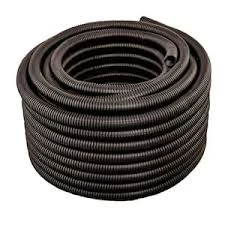Understanding the Function and Importance of Timing Belts in Automotive Systems
Understanding the Importance of Sync Belts in Modern Machinery
In the world of machinery and automotive engineering, the components that drive efficiency and performance are of paramount importance. Among these, the synchronous belt, often referred to as a sync belt or timing belt, plays a critical role in the functioning of various systems. This article delves into the anatomy, function, applications, and advantages of sync belts, shedding light on why they are indispensable in modern mechanical designs.
Anatomy of a Sync Belt
A synchronous belt is typically made from a flexible material reinforced with fibers to provide strength, such as rubber or polyurethane. One of its defining features is the presence of teeth on the inner surface of the belt. These teeth mesh with corresponding grooves on the pulleys, ensuring a positive engagement that prevents slippage. This design facilitates precise timing and synchronization between rotating components, such as an engine camshaft and crankshaft in automotive applications.
The teeth and grooves come in various sizes and shapes, depending on the specific requirements of the machine in which they are used. Materials used for manufacturing sync belts are engineered for durability, heat resistance, and flexibility, making them ideal for high-performance applications where reliability is key.
Function of Sync Belts
The primary function of a sync belt is to transmit power and motion between two or more rotating shafts. Unlike traditional V-belts, which rely on friction for power transmission, synchronous belts ensure that the movement is accurately timed and synchronized. This characteristic is particularly important in applications where precise timing is crucial, such as in internal combustion engines where the timing of the combustion cycle is aligned with the movement of the pistons.
Moreover, sync belts operate quietly compared to their counterparts and have a lower tendency to wear out over time. Their design minimizes vibrations and noise, contributing to a smoother operation of machinery, thereby enhancing user experience and mechanical longevity.
Applications of Sync Belts
sync belt

Sync belts are widely used in various industries, including automotive, aerospace, manufacturing, and robotics. In the automotive sector, they are primarily found in timing systems, helping to coordinate the engine's moving parts. A failure in a sync belt can lead to severe engine damage, making their proper maintenance essential.
In manufacturing, these belts power conveyor systems, ensuring that products move through the production line while maintaining speed and direction. Because of their precise nature, sync belts are also utilized in robotics, facilitating accurate movements that are necessary for tasks like assembly, welding, and material handling.
It's also worth noting that sync belts are used in 3D printers and CNC machines, where precision is essential for producing high-quality components. The demand for accurate dimensional control in these applications emphasizes the importance of employing reliable sync belts.
Advantages of Sync Belts
The use of synchronous belts comes with several advantages over other types of power transmission methods. Some key benefits include
1. Precision Timing Sync belts provide exact timing, making them ideal for synchronous operations. 2. Reduced Slippage With their tooth-and-groove design, sync belts eliminate slippage, ensuring efficient power transmission. 3. Low Maintenance These belts require minimal upkeep, with fewer adjustments needed compared to V-belts. 4. Longevity High-quality materials and construction result in a longer lifespan compared to traditional belts. 5. Quiet Operation The design inherently minimizes noise during operation, making them suitable for environments where sound levels are critical.
Conclusion
In summary, sync belts represent a cornerstone technology in mechanical engineering, driving efficiency and precision across various applications. From automotive engines to manufacturing machinery, their role in ensuring synchronized motion is irrefutable. As industries continue to evolve and strive for greater efficiency, the importance of synchronous belts will only increase, solidifying their place in the future of machinery design and automation. Understanding their functionality, benefits, and applications provides valuable insights into why these components are vital in crafting the equipment of tomorrow.








